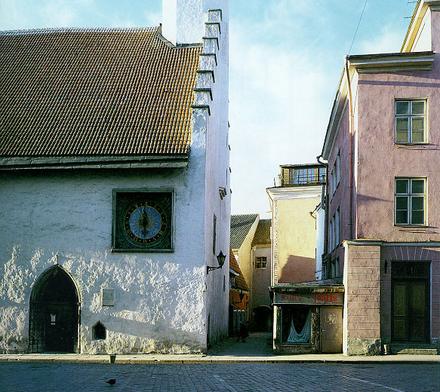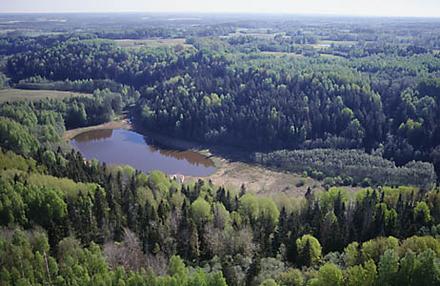Estonia is located in Northern Europe on the coast of the Baltic Sea and for centuries has been a border area between East and West in Europe. Estonia is a small country; its area of 45 227 km˛ is similar to that of the Netherlands but the population is ten times smaller at 1,4 million inhabitants.

Estonia’s neighbours are Russia in the East, Latvia in the South, Sweden in the West and Finland in the North. Estonia's history is colourful, as befits a small country that has been deeply influenced by its neighbours. Over the centuries Estonia has been ruled by foreign powers, for the most part by Germany and Russia but also by Sweden, Denmark and Poland. Local peculiarities from the distant past are still evident in Estonian ethnic culture and foreign influences and adoptions have certainly enriched both local folk music and art. The influence of many different invaders upon Estonia’s ancient culture can be seen throughout the whole country: Russian Orthodox “onion domes”, Swedish place names of villages and towns, German manors and Danish castles – that’s what makes this Baltic country so unique.
 Estonia regained its independence in 1918, after 700 years under foreign rule. Forcibly incorporated into the USSR in 1940, it once again regained its freedom in 1991 with the collapse of the Soviet Union. In spite of centuries of foreign ascendance, Estonians have lived in this area for over 13 000 years, making them one of the oldest nations in Europe.
Estonia regained its independence in 1918, after 700 years under foreign rule. Forcibly incorporated into the USSR in 1940, it once again regained its freedom in 1991 with the collapse of the Soviet Union. In spite of centuries of foreign ascendance, Estonians have lived in this area for over 13 000 years, making them one of the oldest nations in Europe.
Estonia is a republic with the President as the head of state. Estonians speak a soft and melodious language, Estonian, a Finno-Ugric language from the Finnish language group. The local currency is the Estonian Kroon (EEK).
Modern Estonia is developing fast and changes in all aspects of economic and social life have taken place over the last few years.
There is a lot packed into such a small country. Old Hanseatic towns, large areas of almost virgin nature including pine forests, deserted sandy beaches, bogs and wetlands, which have nearly disappeared from the rest of Europe, nature reserves, large and small islands with wooden windmills and juniper fields... These are just some of the attractions of Estonia.
 Furthermore, you will not only find the peaceful countryside but also accurately restored manor house complexes, old fishing villages, fortified stone churches, medieval houses and hidden courtyards, outdoor cafes, shops and never-ending activity. New comfortable hotels, cosy and pleasant restaurants and friendly and qualified guides and hostesses are available for an increasing number of visitors. There is a multitude of cultural events, in which visitors are invited to participate: folk music, song festivals, ethno-music and modern youth festivals.
Furthermore, you will not only find the peaceful countryside but also accurately restored manor house complexes, old fishing villages, fortified stone churches, medieval houses and hidden courtyards, outdoor cafes, shops and never-ending activity. New comfortable hotels, cosy and pleasant restaurants and friendly and qualified guides and hostesses are available for an increasing number of visitors. There is a multitude of cultural events, in which visitors are invited to participate: folk music, song festivals, ethno-music and modern youth festivals.
 Despite a high level of urbanisation, Estonians are quite closely connected with rural life, and Estonia's nature is very diversified for such a small country. There is a lot of wilderness in the protected areas, still a great deal of forest, and beautiful and remarkable landscapes: rounded hills and small lakes in southern Estonia, expansive fields and slow rivers in verdant central Estonia, whereas further north the land becomes more and more rocky until finally it drops off into the sea over high cliffs.
Despite a high level of urbanisation, Estonians are quite closely connected with rural life, and Estonia's nature is very diversified for such a small country. There is a lot of wilderness in the protected areas, still a great deal of forest, and beautiful and remarkable landscapes: rounded hills and small lakes in southern Estonia, expansive fields and slow rivers in verdant central Estonia, whereas further north the land becomes more and more rocky until finally it drops off into the sea over high cliffs.
That’s all just some of the attractions of Estonia. To find more, please go to "Interesting links"!



